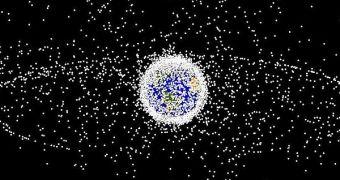Over the weekend, many people in Texas and Kentucky contacted authorities, saying that large fireballs were dashing across the night and even the day sky. After analyzing the phenomenon, officials came to learn that, most likely, the fragments came from the debris field generated after two satellites, one American and one Russian, collided in orbit last week, creating large amounts of space junk.
Yesterday, many people saw fireballs in the sky over the central part of Texas, and even media outlets covered the incident. Moreover, the Federal Aviation Authorities (FAA) issued a warning to all aircraft pilots, urging them to steer clear of falling debris, and to remain on the ground as much as possible.
In Kentucky, the situation was even more unpleasant, as locals complained about hearing loud explosions in the sky and about feeling earthquake-like rumbles throughout the night. The National Weather Service (NWS) announced in a statement that “The Federal Aviation Administration has reported to local law enforcement that these events are being caused by falling satellite debris. These pieces of debris have been causing sonic booms (...) resulting in the vibrations being felt by some residents (...), as well as flashes of light across the sky.”
A few days ago, the Cosmos 2251 Russian retired military satellite collided with Iridium 33, an active American communications satellite. Following the terrible impact, which took place at a height of approximately 490 miles (790 km) above the ground, both spacecrafts were destroyed, and large clouds of debris were formed, some of which will most likely remain in orbit over the next 10,000 years, until their trajectories decay enough for the gravity to pull them in.
According to experts at NASA and RosCosmos, the clouds of debris pose no danger to the International Space Station (ISS), which orbits around the planet at a lower altitude. However, scientists at the American space agency are currently tracking down the remnants, alongside other 15,000 items that need to be assessed as far as their threat level goes. This tracking operation though painstaking is necessary to ensure that sensitive pieces of equipment such as the ISS and the Hubble Space telescope do not get damaged over the next days.

 14 DAY TRIAL //
14 DAY TRIAL //